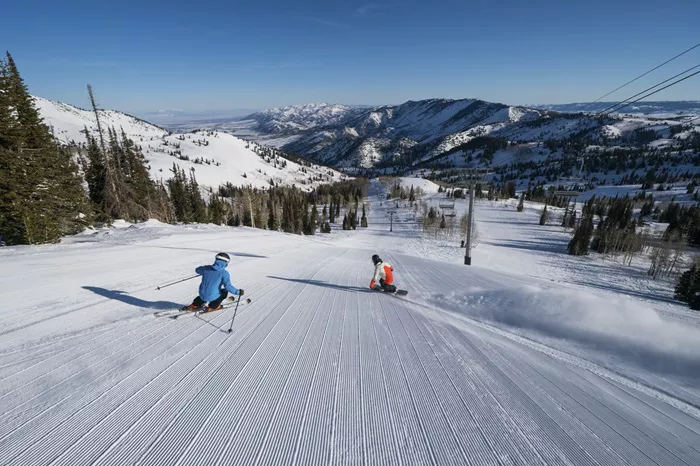Utah’s ski resorts, a cornerstone of the state’s tourism economy, have seen a slight decline in visitation this past winter compared to the previous record-breaking season of 2022-2023, according to Ski Utah’s latest data.
The 2023-2024 winter, influenced by the La Niña weather pattern, recorded 628 inches of snowfall across Utah, down from over 900 inches the previous season. Despite this decrease in snowfall, skier visits only dropped approximately six percent from 7.1 million to 6.75 million, showcasing a resilient interest in winter sports among visitors.
This trend underscores a positive trajectory for Utah’s ski economy, with both recent seasons surpassing pre-La Niña winter visitation and snowfall levels. Typically receiving around 500 inches annually, Utah experienced a slower start to the winter season in December and January but saw a significant uptick in snowfall later on, allowing resorts like Brian Head, Brighton, Snowbird, and Solitude to extend their seasons into May.
The economic impact of these skiing seasons is substantial, as highlighted by the University of Utah Kem C. Gardner Policy Institute’s 2023 report, which estimated that the 7.1 million skier visits during the La Niña winter generated approximately $2.64 billion in state spending. This figure represents more than 20 percent of Utah’s total visitor spending, which approached $12 billion in 2022. Furthermore, nearly 100,000 jobs in Utah are linked to tourism, illustrating the critical role of these record-setting winter seasons in sustaining local employment.
Overall, while ski visits slightly declined year-over-year, Utah’s ski industry remains robust, buoyed by resilient visitor interest and economic contributions that underscore its importance to the state’s tourism landscape.
- Best Time To Ski: Teach You When To Go Skiing
- The Ultimate Joyride: Why Skiing Is An Unparalleled Adventure
- Mastering The Slopes: A Comprehensive Guide To Skiing

